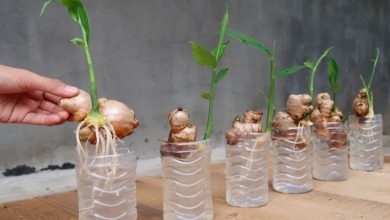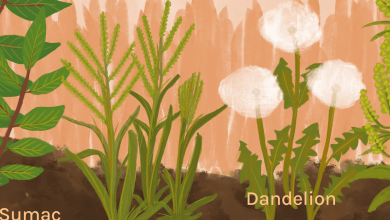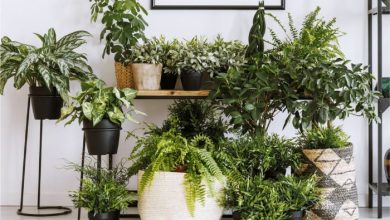Caladium or caladium care
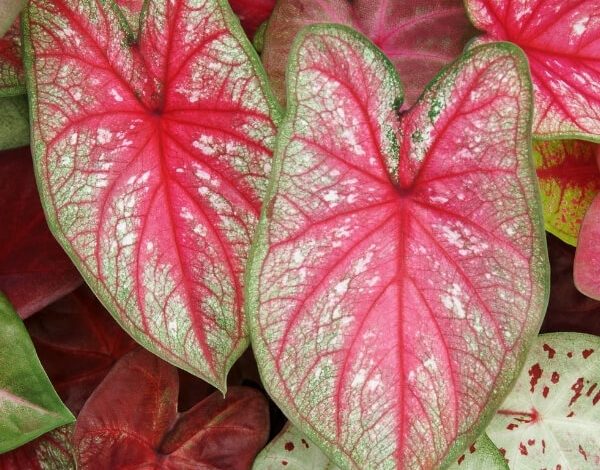
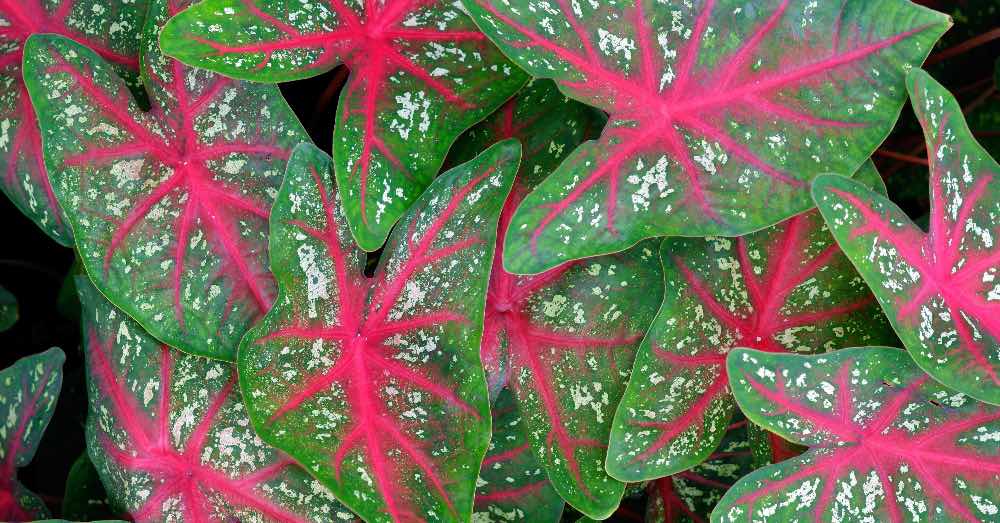
It is one of those plants that captivate just by looking at them. The reason is obvious: the caladium is exceptionally beautiful, eye-catching and highly exotic. However, let us not get carried away by its spectacular nature. Caladium care is demanding and requires some experience in the world of indoor plants. A detail that we must contemplate if we do not want to be disappointed.
As with many other plants, Caladium care is largely determined by its origins. We are talking about a plant from the Brazilian tropical forests. Although it is a plant that has been in Europe for a long time and has undergone multiple hybridizations, the truth is that it continues to have very specific demands regarding its cultivation.
So let’s discover how to enjoy this spectacular plant with its vibrant colors. One that, due to its drawings, receives a popular name that says it all: painter’s palette.
7 CARE OF THE CALADIUM THAT WE SHOULD KNOW
The greatest attraction of this bulbous plant lies in its heart-shaped leaves with nerves that stand out. A design that gives us a clue to one of its plant relationships: the caladium has a close relationship with the elephant ear plant or alocasia.
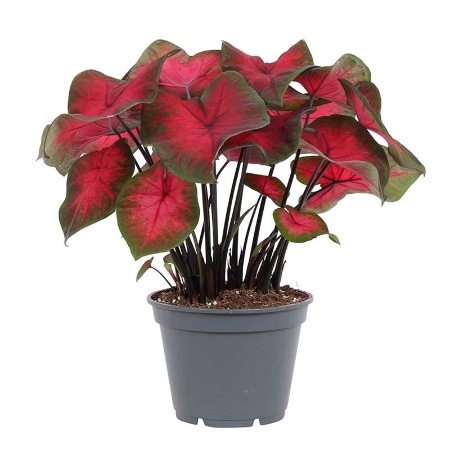
However, and unlike this plant, being rigorous with the care of the caladium we can enjoy the show of tones of its leaves. One that combines greens, whites and yellows with pinks and reds. And we say this because one of the manifestations of an error in its cultivation is, precisely, the loss of coloration of its leaves. A detail that can alert us to conscientiously review which of the Caladium care we are not fulfilling.
Being rigorous, the truth is that it is a plant that we will enjoy for its spectacular size. And it is that, beyond the color, if we cultivate it as it needs, it can reach 50 centimeters. A very interesting height that reinforces the ornamental character of this plant.
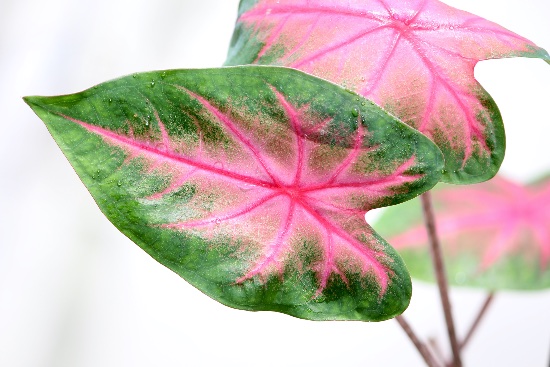
Let’s see its big «but» before going into detail on the care it demands. As with all plants in the Araceae family, Caladium is not recommended for homes with small children or pets. All parts of the plant are toxic, so we will have to rule out its presence among our indoor plants for safety.
1. Warm temperature, the top of Caladium care
Knowing that it is originally from Brazil, it is obvious that it needs warm temperatures. For it to grow properly and develop properly, it requires a stable temperature of 21 degrees. Be very careful, too, with excessive heat: we can never subject it to more than 30 degrees.
For those who consider growing the Caladium among their selection of outdoor plants, it is essential to know that it does not tolerate cold. And be careful, the term cold in the caladium is very relative: below 10 degrees it can be seriously compromised. Therefore, if we have it away from home we will have to take certain precautions with the arrival of winter. If they are planted in a pot, we will have to keep them inside the house. If we plant it directly in the ground, it is essential to dig up the bulbs to protect them at home as well.
2. Permeable substrate, another essential in Caladium care
Although we will see later your hydration needs, let’s have something clear. The Caladium requires a substratum that is always slightly moist but does not tolerate waterlogging. It is a bulb that is demanding with humidity but, like a good bulb, it can rot if the soil retains water.
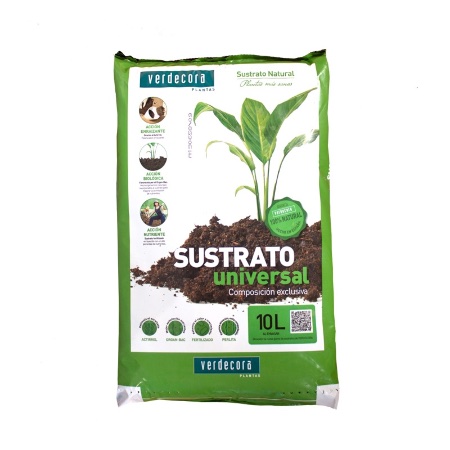
For this reason, not only good drainage is important. We will also have to encourage the evacuation of water by mixing the universal substrate that we use with one of the types of substrates for plants that will favor the balance between humidity and drainage: perlite.
3. Abundant and indirect lighting, responsible for the design of its leaves
Coming from jungle places, the Caladium does not tolerate direct sun. However, to maintain the characteristic coloration of the nerves of its leaves, it needs to be located in a well-lit space. What’s more: the intensity of the colors of its leaves depends, to a great extent, on the light.
If we see that the leaves of our caladium begin to lose their usual color, it will be a symptom of a lack of light.
4. Abundant and regular watering, crucial for its growth
As we said, the Caladium has slightly higher hydration needs than any bulbous one. The amount of water and the frequency of irrigation will increase as the plant grows. Remember that it is important that the substrate is always slightly moist, so we will have to be aware of this aspect.
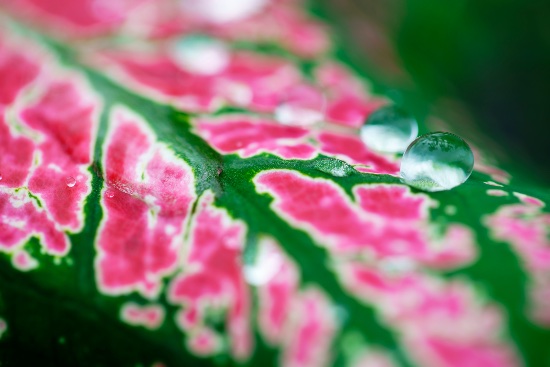
As with light, the Caladium gives us clues if we are falling short with irrigation. If we see that the new leaves begin to grow rolled up on themselves, the plant is indicating that it needs more water.
And one more nuance. Depending on where we grow our caladium, it may happen that it loses its leaves with the arrival of autumn. If so, we will have to interrupt irrigation also during the winter and resume it when spring begins to appear.
5. Regular subscriber, important in the sunny months
The arrival of good weather also coincides with the growing season of the caladium. A moment in which we will have to pay regularly and every 15 days. A task that we will have to carry out during the spring but also in the summer months.
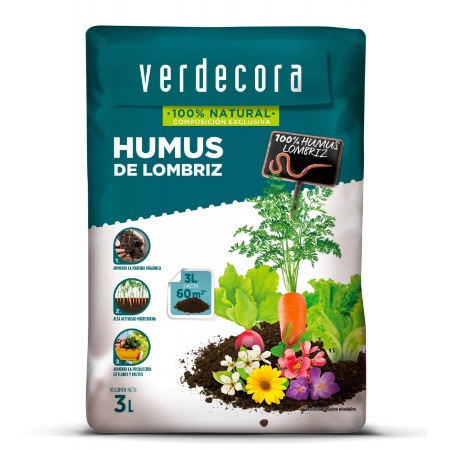
If we opt for chemical fertilizers, the ideal is that they are liquid to be diluted in the irrigation water and rich in nitrogen. If, on the other hand, we prefer a natural one, earthworm humus will be the best choice.
6. Annual transplant, the best ally for its growth
So that our caladium can reach that desired half meter, we will have to transplant it once a year and always at the beginning of spring. Only by offering it a larger pot will the bulb be able to grow and develop.
7. Monitor pests, the last of the Caladium care
Our latest work to bring to fruition the cultivation of this beautiful plant. In the same way that we like it, the caladium is the obscure object of desire especially of an old acquaintance: the aphid. It is not the only pest that can attack this precious plant. If our plant is thirsty or lives in an environment that is too dry, both the red spider and the mites can make an appearance.
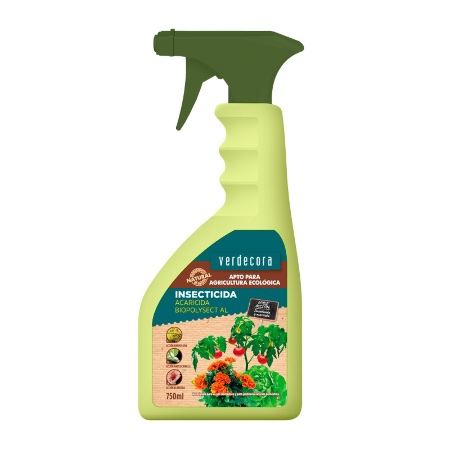
As always, eliminating pests from the garden or from inside our house should be a priority. And, in the case of caladium, especially since any of these pests can compromise the life of the plant.
And now, knowing how this amazing plant is grown, there is only one more thing left – to enjoy its stunning beauty.

